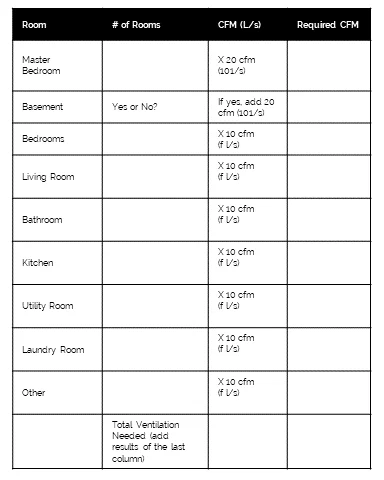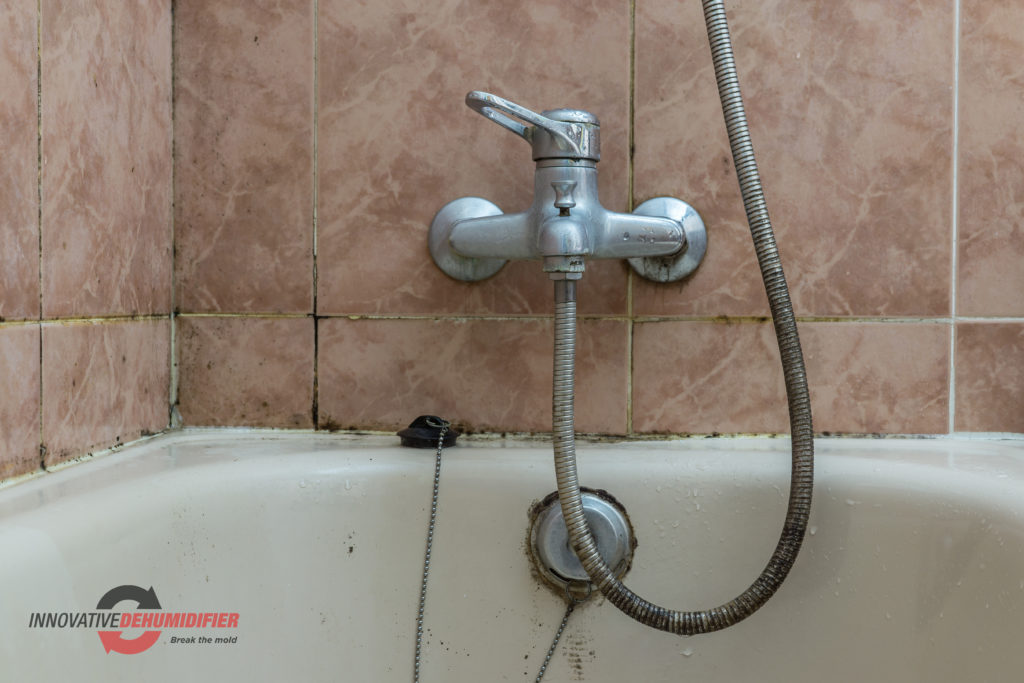Can An ERV System Control Moisture In My Home?
As a homeowner, you are always on the lookout for ways to save energy and keep your home healthy – including optimum indoor air quality (IAQ), because the quality of the air you breathe can have a significant impact on how you feel overall. One solution that’s becoming more popular among today’s homeowners to achieve both of these goals is an Energy Recovery Ventilator (ERV) system. In fact, The Journal of the American Institute of Architects says they are now often mandatory in new construction for schools, offices, churches, fitness centers, theaters and other buildings with high occupancy levels in order to meet code requirements for healthy air. In addition to ensuring the air in your home is fresh, an ERV system can also help reduce heating and cooling costs. But how do they work? And can they maintain your home’s indoor air quality on their own? This article will explain the functionality and limitations of using an ERV system in your home.
What is an ERV or Energy Recovery Ventilator System?
An ERV is a device that exchanges stale, polluted air with fresh, filtered air using a heat exchanger, which transfers heat and moisture between two air streams. This helps to keep indoor air temperature and humidity levels more comfortable while reducing the amount of energy needed to heat or cool a home. Typically installed in the HVAC system, they can be used in both new and existing construction.
Why are ERV systems Needed?

Modern buildings and newly renovated homes have a problem: they are built too well. Today’s tight construction is great for energy efficiency. However, without the means for fresh air to circulate, your IAQ can suffer, filled with trapped contaminants and humidity. That uncontrolled moisture can contribute to mold growth and dust mite allergens, making the air even harder to breathe. In areas where there are high levels of outside pollution or allergens, the problem can be much worse. Some sort of solution is needed to improve IAQ.
Residential energy recovery ventilator (ERV) systems force the flow of fresh air through your home with a minimal air change rate of 0.35 per hour, according to the Home Ventilating Institute. Additional ventilation may be needed if there are large gatherings, cigarette smoking, activities such as painting, and hobbies that produce air-quality contaminants inside.
How do ERV Systems work?
Unlike just opening a window for air circulation, HRV systems rely on two series of fans to create a constant exchange of dual independent air streams. The first fan pulls in outside air, running it through a pre-filter to remove large particles, such as dust, pollen and pet dander, then into a finer filter to remove smaller particles, such as bacteria and viruses. A second fan expels the freshly filtered air into the home, while pushing the interior stale, dirty air outside. As a result, your home receives a circulating supply of fresh, pre-treated air that costs less to heat and cool. HRV systems can move energy and moisture from the more humid air stream to the dryer one using a thin membrane within the interior core. For example, when using an ERV system on a hot humid summer day, the humidity is transferred to the outgoing air, so the air coming into your home will be less humid. And when the outdoor air is dry, the opposite happens, so the air pumped into the home will be more humid. For this reason, many ERV manufacturers claim that their products control humidity.
Considerations before purchasing an ERV System
There are a few things to keep in mind before purchasing a residential energy recovery ventilator (ERV) system. First, consider the size of the unit needed. Traditionally, they were selected based on the square footage of your home, but there are simpler methods to determine the size of your system by allocating a certain number of cubic feet per minute (CFM) to your home with the goal of ventilating at a minimum of 0.35 air changes per hour.
- Total Home Square Footage Count: Total square footage of your home multiplied by your ceiling height (that’s the cubic volume of your home). That number divided by 60 and multiplied by .035.
- Total Home Room Count: Calculate the number of CFMs based on the value of each room, including the basement, using the table below.

NOTE: ERV sizing may vary based on building requirements and government regulations (see ASHRAE STANDARD 62.1 AND 90.1). As a rule of thumb, bigger is better with an ERV, as you can always turn it down if you think it’s ventilating too much – which will also save energy and allow the fans to have a higher efficiency running at a lower speed.
Can ERVs actually maintain moisture levels?
Although they may move some humidity from one air stream to another, ERV systems do not remove the humidity from an interior structure, they simply return moisture to the air from which it originated – just like opening a window. If the outdoor humidity is very high, then the indoor humidity will also be uncomfortable – even when using an ERV system. They are not designed to remove moisture that builds up inside a home from water used in things like cooking, cleaning and bathing. They also don’t have settings to maintain and/or control relative humidity and cannot condensate or drain out moisture.
I need an ERV System – how do I control moisture?
Controlling humidity in your home is crucial because excess moisture can cause mold growth and dust allergens, contributing to health hazards and damage to your belongings, walls, floors and even your home’s foundation. High humidity can also make your home feel uncomfortable and cause musty odors.
ERV systems are great for bringing fresh air indoors, but they don’t remove excess air moisture when the outdoor air is humid. That’s where Innovative Dehumidifiers can help. The patent pending IW25 Wall Mounted Dehumidifier with Bi-Polar Ion Generator is a great addition for homeowners. It works independently from an HVAC system to maintain relative humidity at an ideal level. According to the CDC, keeping humidity levels lower than 50% will control mold growth in your home.
The IW25 removes nearly 30 pints of moisture in 1,500 square feet, and since it’s tankless, there’s no annoying reservoir to empty. Mounted either In Wall or On Wall, it’s up off the floor and tucked out of the way. As a bonus, the quiet operation also features a Bi-Polar Ionizer to further cleanse the air without affecting ozone levels.
For the freshest and cleanest air, consider complementing an ERV system with the IW25 from Innovative Dehumidifier Systems. Contact us today to learn more about our products and how we can help you maintain healthier air.
Sources:
1. Ryan R. Hogar, The Facts About Energy Recovery Ventilators, July 2009, The Journal Of The American Institute of Architects, accessed April 4, 2023 https://www.architectmagazine.com/technology/products/the-facts-about-energy-recovery-ventilators_o
2. Home Ventilating Institute, Fresh Ideas Home Ventilation and Fresh Air & Indoor Air Quality Guide, How Much Ventilation Do I Need, accessed April 4, 2023 https://www.hvi.org/resources/publications/home-ventilation-guide-articles/how-much-ventilation-do-i-need/#:~:text=For%20continuous%20indoor%20air%20quality,square%20feet%20of%20floor%20area.
3. Attainable Home, How to Size an HRV or ERV For Your Home Correctly, accessed April 4, 2023 https://www.attainablehome.com/how-to-size-an-hrv-or-erv-correctly/
4. Engineered System, Examining the Nexus of ASHRAE Standards 90.1 and 62.1, accessed April 4, 2023 https://www.esmagazine.com/articles/99273-examining-the-nexus-of-ashrae-standards-901-and-621
5. CDC | Mold | You Can Control Mold, accessed April 4, 2023 https://www.cdc.gov/mold/control_mold.htm#:~:text=To%20Prevent%20Mold%20Growth%20in,at%20a%20home%20improvement%20store.




